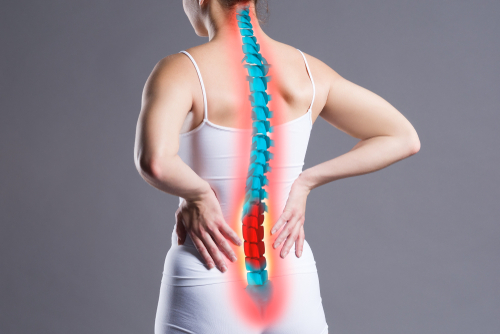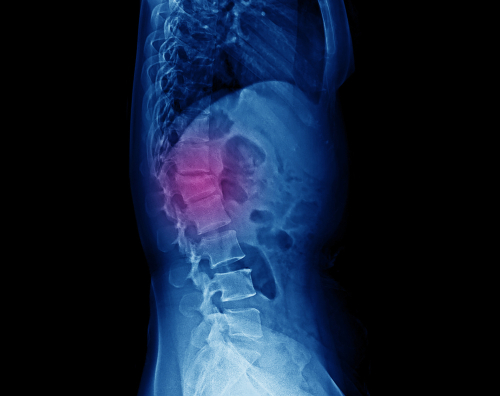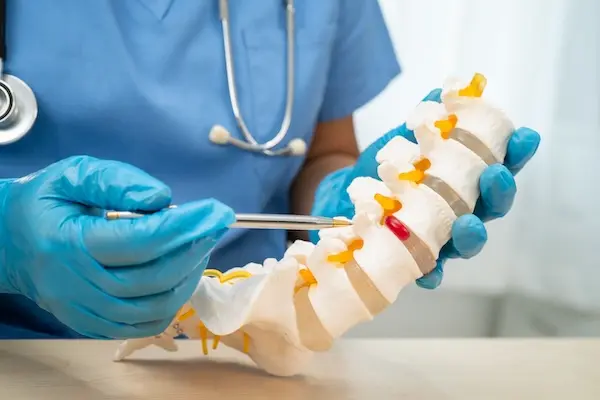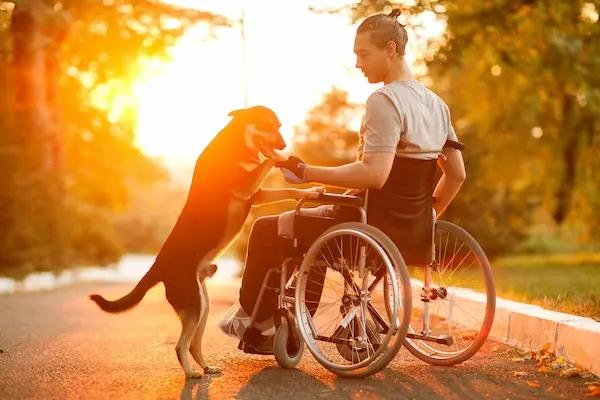Understanding Your Spinal Compression Fracture and Risk Factors
A vertebral compression fracture can be a daunting experience, often accompanied by acute pain, reduced height, and muscle weakness. The concern about future fractures and ongoing bone loss is common among those affected. These osteoporotic vertebral compression fractures typically occur following a decline in bone density, which can be influenced by various medical conditions. At VeriSpine, we begin the diagnostic process with a bone density test and imaging tests, such as standing radiographs and MRI scans, to assess the extent of the fracture.
A precise diagnosis of spinal compression fractures and osteoporotic spinal fractures is crucial to developing an effective care plan. We also assess the possibility of spinal fractures accompanied by spinal cord compression or neurologic injury in the spinal column. Understanding the underlying medical conditions that may contribute to these fractures is essential. Key risk factors include age, postmenopausal women, secondary osteoporosis, excessive alcohol consumption, multiple myeloma, and malignant fractures.
Our comprehensive approach includes conservative treatments like wearing a back brace, using muscle relaxants, and administering pain medications. For immediate pain relief, vertebral augmentation with bone cement may be recommended. In some cases, our spine surgeons will evaluate whether surgical intervention is necessary. To support overall bone health and prevent future fractures, physical therapy and regular weight-bearing exercises are essential components of your treatment plan. Each step is designed to reduce pain, improve your clinical outcomes, and help you manage the risks associated with vertebral compression fractures and other medical conditions.
The Hidden Dangers of Untreated Osteoporotic Vertebral Compression Fractures
Left untreated, osteoporotic vertebral compression fractures can lead to persistent pain and serious spinal issues. A simple compression fracture in the lumbar spine may cause acute pain and muscle weakness that limits walking and daily tasks. Each fractured vertebra collapses, shortening vertebral body height and accelerating bone loss. You might suffer spinal cord compression or neurological injury that affects sensation, bowel control, or breathing. Risk factors like low bone density, secondary osteoporosis, and postmenopausal hormone changes only make matters worse.
Increased Risk of Future Spinal Fractures and Bone Loss
The hidden consequences go beyond pain management. Increased risk of future fractures threatens your independence. Malignant fractures or complications from multiple myeloma can worsen clinical outcomes. Conservative therapy with pain medications, muscle relaxants, or a back brace may ease discomfort for a time. But timely vertebral augmentation or interventional radiology can reinforce spine bones with bone cement and relieve pain quickly. In the sections below, we cover chronic pain and impaired mobility, the threat of further spinal fractures, and the potential respiratory impact of untreated injury.
Comprehensive Pain Management at VeriSpine Joint Centers
We understand the fear that comes after a vertebral compression fracture. You may face persistent pain. Our team stands with you.
Conservative Therapy: Bracing, Physical Therapy, and Pain Medications
When a compression fracture is first diagnosed, nonsurgical treatment can bring relief. We prescribe a back brace to stabilize the spinal column. Physical therapy follows. Sessions strengthen core and back muscles. Pain medications and muscle relaxants ease persistent pain. A bone density test checks for secondary osteoporosis. Nutrition advice and vitamin d support bone health. Our approach aims to prevent fractures and curb bone loss.
Advanced Interventional Radiology: Vertebral Augmentation and Bone Cement Injection
If acute pain endures or vertebral body height drops, we may suggest vertebral augmentation. A tiny needle injects bone cement into the fractured vertebrae. Imaging tests such as MRI scans and standing radiographs guide the process. Many patients feel pain relief within hours. This procedure also helps prevent future fractures in nearby spine bones.
Regenerative Medicine and Lifestyle Strategies to Prevent Future Fractures
We combine regenerative medicine with lifestyle plans. Treatments can rebuild osteoporotic bone. Regular weight bearing exercises boost strength. Diet changes curb risk factors like excessive alcohol consumption. We guide postmenopausal women and others with secondary osteoporosis. This work can lower the chance of further fractures. Each step supports lasting bone health.
Why Roswell & Stockbridge Trust VeriSpine for Vertebral Fracture Relief
VeriSpine Joint Centers serve Atlanta, Roswell and Stockbridge with a clear promise: relief from vertebral compression fractures. We understand the sharp acute pain that follows a spinal compression fracture. You deserve experts who move quickly to diagnose and treat your injury. Our teams stand ready with advanced imaging tests, including MRI scans and bone density tests. Then we act—fast.
Specialized Expertise in Personal Injury, Workers’ Compensation & Federal Claims
Many vertebral fractures stem from car crashes, slips, or workplace accidents. Our physicians have years of experience handling compression fracture claims under workers’ compensation and federal programs. We know how to document physical examination findings, identify risk factors for bone loss, and work with spine surgeons when surgical intervention is needed. You benefit from coordinated care that covers every step—from the initial physical exam to interventional radiology for vertebral augmentation or bone cement injection.
Proven Clinical Outcomes and Patient Success Stories
Our numbers speak for themselves. Patients with osteoporotic vertebral compression fractures report significant pain relief after vertebral body height is restored. Clinical outcomes include reduced need for pain medications and a lower incidence of further fractures. Stories flow in of men and women who regain mobility and return to work. One recent patient avoided a secondary osteoporosis diagnosis thanks to early treatment and regular weight bearing exercises. Another saw immediate improvement after a back brace and conservative treatment plan.
Compassionate, Patient-Centered Care in Metro Atlanta
You are not a medical chart. You are a person in pain, facing bone loss and the fear of future fractures. We listen. We explain every step in plain language. Whether you require physical therapy, muscle relaxants, or advanced interventional techniques, your comfort guides our choices. We coordinate appointments in Roswell or Stockbridge. We help with insurance paperwork and workers’ comp details. Our goal is simple: relieve your pain, protect your spinal column, and restore your bone health.
Schedule Your Free Consultation for Vertebral Compression Fracture Relief
At VeriSpine Joint Centers, we know how a spinal compression fracture can disrupt daily life. Your free consultation starts the moment you call. We gather your history. We focus on relief.
What to Expect During Your Initial Evaluation
In your first visit, we listen. We review your clinical presentation and risk factors. A detailed physical exam follows. We assess physical examination findings to spot vertebral fractures or spinal compression fracture signs. We inspect posterior column integrity and lumbar spine alignment. Bring any imaging tests. A bone density test report helps. Standing radiographs or an mri scan are welcomed. We look for osteoporotic vertebral compression fractures, malignant fractures, or signs of secondary osteoporosis. You may have acute pain, muscle weakness, or impaired respiratory function. We discuss changes in bowel control too. Next, we map a plan.
Options range from conservative treatment—bracing, muscle relaxants, pain medications—to interventional radiology like vertebral augmentation with bone cement. Surgical intervention may follow if needed. Our aim is quick pain relief, restored vertebral body height, and to prevent future fractures.
Support with Insurance, Workers’ Comp, and Federal Employee Claims
Claims work can feel overwhelming. We handle it for you. Our team guides your workers’ compensation or federal employee claim. We share medical details that justify treatment—physical therapy, spinal column care, or imaging tests. If you need assistance with any aspect of your claim, don’t hesitate to contact us for guidance and support. We press insurers to cover nonsurgical treatment and advanced procedures. You deal with healing, not paperwork. We push for complete coverage. That includes pain management, rehabilitation, and surgical treatment if required. You stay on track to prevent fractures and boost bone health 678-782-7999






